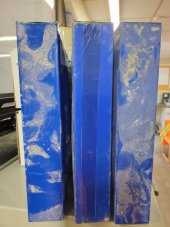These are battery cells from my coworker. My coworker is a licensed electrician and insisted he knew what to do.
He decided that a BMS was not needed and that the inverter would take care of regulating and protecting the cells.
So he left the power on in the middle of winter, the batteries drained 100%, froze, then at some point the inverter charged 9/16 cells as 9 are extremely bloated.
And now the entire pack of 16 cells shows 6V. (100amp cells) 3 cells are holding a voltage of 1.02V, 4 other cells are holding voltages of .034, .056, .0455 and so on...
We sometimes learn hard expensive lessons.
He bought a new set of LFP batteries and has decided that the bms is still not needed.
he will instead just disconnect the batteries when not in use.
Dont do this..... Buy a BMS!
He decided that a BMS was not needed and that the inverter would take care of regulating and protecting the cells.
So he left the power on in the middle of winter, the batteries drained 100%, froze, then at some point the inverter charged 9/16 cells as 9 are extremely bloated.
And now the entire pack of 16 cells shows 6V. (100amp cells) 3 cells are holding a voltage of 1.02V, 4 other cells are holding voltages of .034, .056, .0455 and so on...
We sometimes learn hard expensive lessons.
He bought a new set of LFP batteries and has decided that the bms is still not needed.
he will instead just disconnect the batteries when not in use.
Dont do this..... Buy a BMS!





